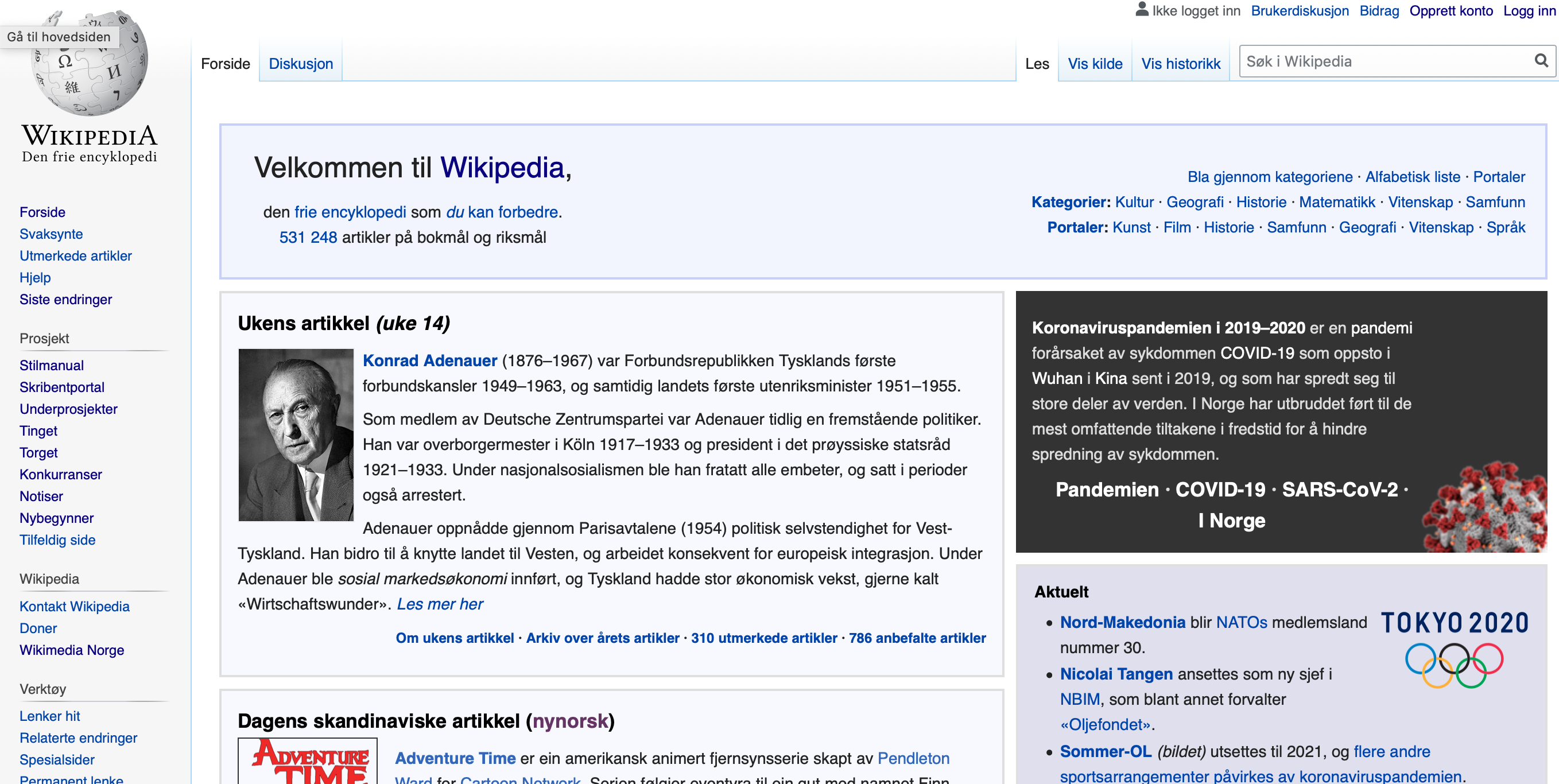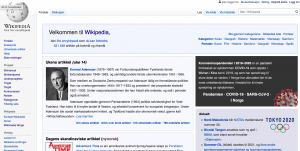How is Wikimedia responding to COVID-19 crisis?

Netha Hussain is a PhD Student at the University of Gothenburg, a Medical Doctor and an active Wikimedian. Since early 2020, she has been one of the most active contributors to the COVID-19 project, where volunteers make sure that Wikipedia articles are updated, correct and filled with information. In this post, she describes how the Wikimedia movement works with the COVID 19-pandemic.
The Wikimedia community has always responded to crises happening around the world by creating and updating articles, collecting structured data and uploading media related to the crisis. Previous crises that saw prompt response from the Wikimedia community were the Arab Springin 2011, Ebola virus outbreak in West Africa in 2014 and global warming, just to name a few. The crisis response was made possible by the coordinated actions of thousands of Wikimedians from across the world.
On 31st December 2019 suspicions about a “cluster of previously unknown pneumonia cases” were reported from China. The English Wikipedia article about COVID-19 appeared as early as on 5th January 2020, just five days after the disease was detected. Since then, the article has undergone major expansion and it now gives a comprehensive overview of the COVID-19 pandemic. As of March 2020, the article has been edited by over 2,000 individuals, including medical doctors and researchers. It has gathered over 14 million views over the last three months. When COVID-19 was confirmed in other parts of the world than Mainland China, newer articles were created for country- and territory-specific information. As of March 2020, there are specific Wikipedia articles about the pandemic for more than 170 countries. The article about COVID-19 disease, which contains specific information and latest research about the disease has been read over 6 million times in March 2020.
COVID-19 crisis had great socio-economical and cultural impact, which was also extensively documented on Wikipedia. By March 2020, over 20 articles were created about the impact of COVID-19 on various spheres of life. Articles about persons involved in leadership of the crisis mitigation, drug and vaccine research were also created. The main page of Wikipedia started featuring COVID-19 news. There is even a dedicated article for documenting COVID-19 misinformation. A structured overview of most Wikipedia articles related to COVID-19 are documented in a template here.
Wikipedia editors work tirelessly to update not only the text, but also the graphs and maps related to COVID-19. Since the disease situation is changing every day, massive amounts of volunteer work is needed to make sure that updated epidemiological maps are shown, that the numbers presented in tables are accurate and that the data is updated everyday. When coordination is required between editors working on a particular topic, Wikipedians usually create Wikiprojects, pages where everyone interested in the topic come together to work for a common cause. The Wikiproject for COVID-19 was started on 15th March, and it keeps track of the articles related to COVID-19, trusted external sources wherefrom COVID-19 data can be extracted and current events related to COVID-19 on Wikipedia. It also maintains the list of COVID-19 articles needing attention.

The main page of Bokmål Wikipedia features COVID-19 news (the original blog post showed an example from English Wikipedia)
A similar Wikiproject was started on Wikidata, a sister project of Wikipedia which contains structured data. Thanks to the work of Wikidata volunteers, it is now possible to query about various aspects of the disease. Do you need a list of COVID-19 infected countries by the start date of infection? Here is the answer. Do you want to generate a list of notable people who died due to COVID-19 infection? The answer is here. Wikidatians are also building a repository of journal articles related to the disease.
Several language editions of Wikipedia stepped up to respond to the COVID-19 crisis. As of March 2020, over 100 language editions of Wikipedia have an article related to COVID-19. Shorter versions of the articles were made available for translation for language communities that do not have the resources to start a new article from the scratch. All language versions of the COVID-19 pandemic collectively gathered over 30 million views as of March 2020. Out of these, the articles on Russian, German and Spanish language editions have gathered over 2 million views each.
The Wikimedia community has also procured images related to the pandemic. An upload campaign was started where anyone can upload the images of empty streets during the COVID-19 stay-at-home restrictions. Images of people buying large amount of food to prepare for the crisis from over 20 countries were documented. High quality images about SARS-Cov-2 virus were made available from trusted sources such as National Institute of Health, USA. The image showing signs and symptoms of COVID-19 has been translated to at least 20 languages.
In addition UNESCO have made their content on the impact of education available under an open license allowing Wikipedia volunteers to reuse the information on Wikipedia.
Many Wikimedians, like everyone else, now need to stay at home for their safety. All physical events sponsored by the Wikimedia Foundation, the non-profit that maintains Wikipedia and its sister projects, stand cancelled until further notice. However, Wikimedians have found new ways to collaborate. Physical editing events, even those that were continuously run for over 6 years, got switched to online format. Wikipedia Weekly podcasts which give updates on various aspects of Wikimedia have now become popular. Wikimedians are now seriously considering remote participation, and are experimenting on various remote engagement models. The Wikimedia Foundation closed its offices and the work hours have been reduced by at least 50% for all staff at least until the end of March.
The traffic to Wikipedia has increased over the past few weeks. It is not yet known if the increase in traffic is due to the behavioural changes due to lockdowns in many countries, or if it is because of the popularity of COVID-19 pages themselves, and research is underway. Many articles not directly related to COVID-19 have also started receiving a high spike in viewership, such as the articles on Contagion (film), mortality rate (epidemiology) and Tedros Adhanom (Director, World Health Organization). It is likely that people will spend more time online until this crisis is over, and the Wikimedia community will need to respond to the increase in demand for knowledge in the upcoming weeks.
Written by Netha Hussain. The author is a Wikimedian, medical doctor and researcher working on articles related to COVID-19 on Wikimedia projects. This blog post was first published on Wikimedia Sverige’s blog 27 March 2020.
Kategori: Innlegg forside, Internasjonalt, Nyheter